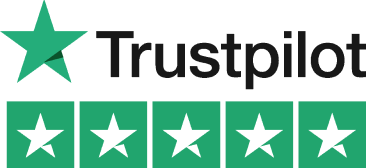Understanding the Difference Between EIS and SEIS Tax Relief
Discover the key differences between EIS and SEIS tax schemes, including relief rates, investment limits and eligibility criteria for UK investors.
Confused about EIS and SEIS? They both offer attractive tax benefits for investors, but work quite differently. The UK's first personal tax app, Pie.tax, can help you calculate potential tax relief from your investments. Or if you're just here to get to grips with it all, let's break it down!
What Are EIS and SEIS?
The Enterprise Investment Scheme (EIS) and Seed Enterprise Investment Scheme (SEIS) are government initiatives designed to encourage investment in UK businesses. These are venture capital schemes aimed at supporting early stage companies and UK startups by providing tax reliefs to investors.
SEIS was introduced in 2012 to complement the existing EIS (launched in 1994). Both schemes offer tax incentives to attract potential investors and private investors willing to put money into qualifying, innovative businesses.
Think of SEIS as focusing on very early-stage startups, while EIS targets more established but still growing businesses. This fundamental difference affects everything from tax relief rates to investment limits.
Both schemes are managed by HMRC, with specific rules to ensure they support genuine business growth rather than just tax avoidance.

Key Differences Between EIS and SEIS
When comparing SEIS vs EIS, it’s important to understand that SEIS or EIS are both UK government schemes designed to incentivize investment in early-stage companies, but they differ in eligibility, investment limits, and tax relief benefits.
The most obvious difference is the stage of business each scheme supports. SEIS is exclusively for very young companies (under 2 years old), while EIS extends to businesses trading for up to 7 years.
Tax relief rates differ significantly too. SEIS offers a generous 50% income tax relief on investments, compared to EIS’s 30%. This higher rate reflects the increased risk of investing in very early-stage businesses.
Investment limits vary dramatically. Under SEIS, companies can raise a maximum investment of £250,000 per tax year (the SEIS investment limit), while EIS companies can raise up to a maximum investment of £5 million annually (the EIS investment limit). These caps are crucial for both investors and companies planning to raise funds.
For individual investors, SEIS limits you to investing £200,000 per tax year, whereas EIS allows investments up to £1 million annually.
Company size restrictions also differ. SEIS companies must have fewer than 25 employees and gross assets under £350,000. EIS extends this to businesses with fewer than 250 employees and gross assets up to £15 million. Knowledge intensive companies may qualify for higher EIS funding limits, allowing them to raise more under the scheme due to their focus on research and development.
An EIS qualifying company is one that meets specific criteria, such as carrying out a qualifying trade, being unquoted, and using the funds for growth and development, which allows investors to defer Capital Gains Tax when investing in its shares. An EIS company must also comply with rules regarding the use of EIS funding and the timing of investments.
When considering how much companies can raise, all raised funds, including money raised through SEIS funds and EIS funding, count towards the overall limits. The total amount a company can raise may also include funds from other venture capital schemes, so it’s important to track all sources when planning to raise funds. Proper management of money raised is essential to comply with scheme rules and maximize investment benefits.
Tax Benefits Comparison
Both schemes offer excellent tax advantages, but with notable differences in rates and conditions. The tax reliefs range provided by EIS and SEIS includes generous tax breaks, making these schemes highly attractive to investors.
With SEIS, you’ll get 50% income tax relief on your investment this is known as SEIS income tax relief. So if you invest £10,000, you could reduce your income tax bill by £5,000.
EIS offers 30% relief referred to as EIS income tax relief still substantial, but reflecting the somewhat lower risk compared to SEIS investments. A £10,000 EIS investment could reduce your tax bill by £3,000.
Both schemes provide 100% Capital Gains Tax exemption on profits from shares held for at least three years, which is a form of capital gains tax relief. This can be a massive benefit if your investment performs well. Investors who have received income tax relief and meet the holding requirements may also benefit from additional capital gains tax relief.
SEIS also offers a unique 50% Capital Gains Tax reinvestment relief. If you’ve made a capital gain and reinvest that money into SEIS shares, you can reduce the CGT on that original gain by half. This is known as CGT reinvestment relief, and it incentivizes reinvesting gains into qualifying SEIS shares. Additionally, deferral relief and CGT deferral relief may be available for investors reinvesting gains under certain schemes.
Loss relief works similarly across both schemes. If your investment fails, you can offset losses against either income tax or capital gains tax, significantly reducing the downside risk.
Other benefits include inheritance tax relief, which can help reduce the inheritance tax liability on SEIS or EIS shares held for the required period. Claiming relief through these schemes involves submitting the appropriate forms (such as EIS3), and the relief directly reduces the investor's income tax liability. If the relief exceeds your liability, it may be wasted, so understanding the process of claiming relief is important for effective tax planning.

Carry Back Options
Both EIS and SEIS allow for "carry back" of investments to the previous tax year. This means you can claim tax relief against your previous year's income if that's more beneficial.
This feature is particularly handy near the end of the tax year. If you've already used your current year's allowance, you could still invest and claim relief against the previous year.
I once advised a client who made an SEIS investment in early April. By carrying back the relief to the previous tax year, he received his tax refund three months earlier than expected.
You'll need to have enough tax liability in the previous year to benefit from this option. The relief can't exceed the tax you've paid.
Risk Considerations
SEIS investments typically carry higher risk these are very young companies, often pre-revenue or just beginning to trade. The higher 50% tax relief partially compensates for this increased risk. Investment risk is a key consideration for both SEIS investors and EIS investors, as these schemes involve investing in small or unquoted companies where the risk of capital loss is significant.
EIS companies are usually more established, with some trading history and potentially even some profits. The 30% relief reflects this somewhat lower (though still significant) risk profile. EIS investments offer tax incentives such as income tax relief and capital gains tax relief, but it is important to understand the risks associated with EIS shares, including the need to hold them for at least three years to retain tax benefits.
Your investment strategy should align with your personal risk tolerance. EIS investors and SEIS investors often approach risk differently, with some preferring the higher potential returns (and risks) of SEIS, while others focus on the relative stability of EIS. Some investors mix both schemes to create a balanced portfolio of startup investments.
Remember that despite the generous tax reliefs, there’s still a very real possibility of losing your investment with either scheme. Never invest money you can’t afford to lose. Also, be aware that if you have a significant financial interest in the company such as owning more than 30% of the shares or holding a managerial position you may not be eligible for certain tax reliefs.

Final Thoughts
The difference between EIS and SEIS comes down to timing, risk and scale. SEIS targets the earliest, riskiest stage with higher tax relief percentages but strict limits.
EIS supports the next phase with slightly lower relief but much higher investment capacity. For many businesses, SEIS funding leads naturally to EIS rounds as they grow.
For investors, the choice often depends on your risk appetite, tax position and the amount you wish to invest. Many sophisticated investors include both in their portfolios.
For founders, understanding which scheme your business qualifies for is crucial for attracting the right investors at the right time in your company's journey.
Pie tax: Simplifying EIS and SEIS Tax
Calculating EIS and SEIS tax relief doesn't need to be a headache. The UK's first personal tax app makes it simple with real-time calculations.
Pie tax shows you instantly how your investments affect your tax position. Our intuitive interface updates as you add new investments throughout the tax year.
Our dashboard keeps track of your remaining SEIS and EIS allowances across tax years, helping you maximise relief without accidentally exceeding limits.
We handle the paperwork too, automatically incorporating your investment scheme reliefs into your self-assessment and storing your certificates securely.
If you'd like to see how much tax you could save with your investments, give Pie tax a try.











